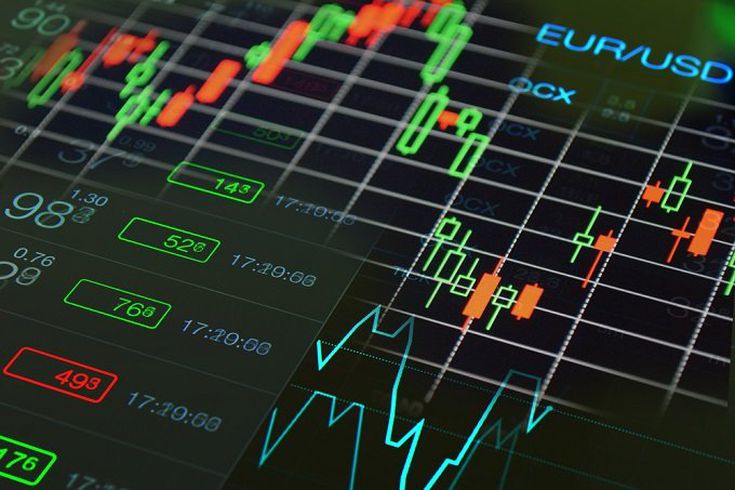19 March, 2020, | AtoZ Markets – Price action is a method of predicting the price of a currency pair based on the movement of price. Price action is a powerful tool for technical analysis that is used by most of the professional traders. The main difference in price action trading with other trading methods is that it ignores the amounts of indicators from the charts.
Support and resistance is an important tool that is used by most of the price action traders in the forex market. However, support and resistance are not a level or zone only. You can use it for intraday, swing as well as position trading.
Support and Resistance in Forex Market
The concept of support and resistance trading is the same for every market, whether it is Forex, Stock or Crypto trading.
In a regular Forex chart, we normally see these levels as a horizontal line or area from where the price is possibly likely to reverse. But a trader should ask himself why the level is so important and what makes the level react as a potential reversal zone.
In a normal market, when we buy something, the price goes up as the demand increases. This is a basic economic term called Supply and Demand. Similarly, the price goes down when the supply increases.
In every market, when a price breaks any important support or resistance level, it creates panic for the traders who make losses.
Trade forex safely with an AtoZ approved broker:



For example, in the above-mentioned picture, we can see the panic of sellers at the question marked area. It was a happy ranging market, so buyers and sellers were able to make a profit by selling from high and buying from low. But in the end, price moves sharply above the sellers' zone, creating panic to the sellers at that level.
As traders make losses, they set it to their memory that they may face loss again if the price reaches that level. Hence, the level becomes important. Therefore, traders consider those levels as important support or resistance.
So, it is very important for a trader to understand the concept behind the support and resistance trading rather than believing it as a simple horizontal zone.
Trade Intraday Using Support & Resistance Levels
Most of the institutional traders trade in larger timeframes. Banks, Hedge funds, Financial institutes, Insurance companies do trade in a daily time frame mostly. Therefore, support and resistance work well in larger time frames.
However, do you know you can trade intraday using support and resistance levels?
Below, we will see the step-by-step approach of the intraday trading techniques using support and resistance levels.
Identify Key Support and Resistance Level
What do key support and resistance levels mean? How do you find them?
If you zoom out your trading chart and move to a daily and weekly timeframe, you will see some levels that are at the top or bottom of your chart.

From those levels, you can see how prices moved up and down. As those are in higher time frames, it will take a longer time to take trades from those levels. Therefore, as we are trading intraday, we will ignore those levels in our trading. The only reason to use those levels is to measure the price direction. Remember! The larger players are in higher time frames. So whatever trade we take, we should ensure that we are going with them, not against them.
- When the market is moving down from a key resistance, we will consider selling only
- When the market is moving up from key support, we will consider buying only
Before going to the intraday chart, we will move our journey from key levels, and then we will find important event levels.
Find Important Event Level
Event levels are very important as the main trading activity of larger players happens from that level.
In the daily and 4 hourly charts, you may see some levels to work as support and after breaking the level it works as a resistance. This means it changes the motivation of traders from buyers to sellers or from sellers to buyers.

In the image above, you can see a level worked as a support, and when the price broke the level with a candle close, it worked as resistance.
Like this intraday trading strategy and want to try it out? Do it with an AtoZ Approved broker for free:



So before going to the intraday chart, we need to make sure that the price moved from intraday event levels towards the direction that we have set from key levels.
- If the price moved down from an event level, our bias would be selling.
- If the price goes up from an event level, our bias will be buying.
Spot Intraday Near Term Levels
If you can set your price direction from key levels and event levels, you have done the most of the work to take an intraday trade.
Your next job is to find intraday near term levels on a 15-minute chart to take and enter. So what does the near term level mean?
Near term, levels are levels that are very close to the current price. If you know the current price direction, you can anticipate that the price will move towards your direction by creating and price action signs from intraday levels.

In this example, you can at the red marked zone, see how price followed the intraday levels towards the direction we set before.
Set Market Directions with Top Bottom Analysis
This is a simple checkout step of step 1 to step 3. We need to make sure those key levels, event levels, and near term levels are indicating the same price direction.
If you see that the price is below the key levels, your main intention would be to sell. Later on, the selling probability will increase if you see the price is below any event levels and rejecting buyers in the near term levels.
Double-checking the whole process is very important as you may face a lot of pressure while you are in front of the live chart. Remember! it is very easy to analyze the market that already happened, but traders make mistakes in analyzing live charts due to the scare of losing money.
Enter the Trade
This is a pretty straight-forward method. In order to take any entry, you need to see some candlestick patterns to determine that the opposite party has failed.
This could be by forming a pinbar, an engulfing bar, 2bar reversal, or even a simple indecision candle.

In the image above, you can see how a pinbar formed in a 15- minute chart towards the previous direction that we have set earlier.
Stop Loss and Take Profit Idea
There are many traders who can identify and take trades successfully but can not make sustainable growth in their trading account. The reason behind this is that they often struggle to set stop loss and take profit.
For stop losses, you can set it above the price action candle with some buffer for sale entry. Conversely, you can set stop loss below the price action weapon with some buffer for a buy entry.
For setting take profits, you can read the market and identify the next important near term levels. This step is a little bit tricky. If you see the price move impulsively in your direction, you can extend your take profit levels to get the maximum benefit from the market.
Try intraday trading with a reputable broker on a free account:



Trade Management Idea
Trade management is the hardest part that a forex trader may face. As we know, the forex market is very uncertain. No one in the market can tell where the price may go. Therefore, we trade only probabilities.
So what you learn from a trading strategy is just a probability to predict the price movement. Therefore, no strategy can give you a guaranteed profit. Therefore, to make a sustainable growth to your account, you need to make sure that you are using an appropriate risk: reward for every trade. Overall you should maintain the below-mentioned rules as money management rules:
- Never invest the money that you are not ready to lose.
- Do not take trades by risking all of your investment.
- Always try to take 1-2% risk per trade.
- After making a loss, do not jump into the market to recover.
- Understand the trading method well and do not take the trade until all conditions appear.



